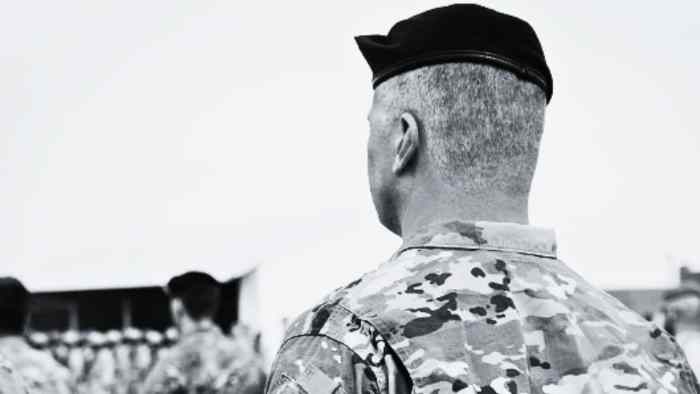The Eastburn Family Murders and the Trials of Sergeant Timothy Hennis

U.S. Army Sergeant Timothy Hennis was tried three times for the murder of the Katie Eastburn and two of her children.
The Eastburn Family Murders: A Mother's Day Tragedy
Mother’s Day, May 12, 1985, started out like any other day, especially for America’s military service members, many of whom were far from their homes and families; phone calls and cards would have to substitute for visits and hugs while they went about their duties.
Gradually, however, these dedicated men and women would learn that a horrifying tragedy had befallen one of their own. The wife and two daughters of Captain Gary Eastburn were found murdered after fighting for their lives. Grown men shed tears at the image of the lone survivor, a 21-month-old baby, standing, arms outstretched, crying for out for her dead mother and sisters. Crying out for someone.
Anyone.
Military Life, Military Family
Katie Eastburn was used to going it alone. She was a military wife, after all. Her husband, Gary Eastburn, was frequently away; this time, he was attending an Air Force captain-in-training school in Alabama.
The Eastburns were excited about their upcoming transfer to Germany, even if it was a little nerve-wracking thinking about moving to a foreign country. But there was sure to be plenty of support; the military base to which they had been assigned was large and accommodating to its American service members and their families.
Katie and the girls knew they’d miss their family and friends, but they were also heartbroken about having to leave their family dog Dixie behind—strict regulations prohibited them from bringing the pet along.
With a heavy heart, Katie placed a classified ad in the local paper that serviced the Fayetteville and Fort Bragg area, hoping to find a good family willing to take Dixie and love the animal just as they did.
Around 9 p.m. on Tuesday, May 7, 1985, Army Staff Sergeant Timothy Hennis answered the classified ad. He and his wife, Angela Hennis, loved dogs but their current pet was extremely jealous of their newborn daughter.
Despite their best efforts, Snowball, a mixed breed, just wasn’t going to work out, but they hoped they could find another dog, preferably one from a home with kids, which newborn Kristina could grow with and enjoy. Dixie seemed to be exactly what Tim and Angela were hoping for.
Before he left the Eastburn home, he asked Katie to use the restroom and she obliged—no doubt comfortable with her husband’s fellow soldier. Tim soon exited, thanked Mrs. Eastburn for both the use of facilities and Dixie, attached the dog to a leash, and started toward home, eager to introduce Kristina and Dixie.
Day of Discovery
It can't be said with 100 percent certainty how it all went down on that Thursday, May 9, 1985, but what is known is that Katie Eastburn and two of her three daughters would die brutal deaths.
On Sunday, May 12, the Eastburns’ next-door neighbor, Army sergeant Bob Seefeldt, had just bailed out one of his soldiers who had a little too much fun on Saturday night and landed himself in the clinker.
When he returned home, he was greeted by a worried wife who had noticed that papers were piling up on the Eastburns’ doorstep. The family car was still in the driveway and the baby stroller was parked in its usual place by the back door.
The more Bob thought about it, he realized he hadn’t seen the Eastburns in at least three days. He decided a little investigating was in order.
As he stepped up to the front door, he was certain he heard the cries of an infant, but his knocks and doorbell rings went unanswered. Returning home, he called the Eastburns' babysitter Julie Czerniak, who came rushing over.
Bob was waiting outside the Eastburn home when she arrived. Julie peeked into a window and saw baby Jana, standing alone in her crib, arms outstretched. Reacting on instinct, Julie began looking for a possible way into the home, but Bob convinced her to wait for the arrival of police.
Officer William Toman was the first to arrive. Forcing open a window, he retrieved the crying infant and a stack of diapers and handed her to Bob. Saying he smelled something horrible, he told Bob to stand by as he went to check out the source. Right away he discovered the dead bodies of Katie and her three-year-old daughter, Erin. Officer Toman called for backup.
A full-scale search of the home found the body of five-year-old Kara Eastburn, lying in bed with the covers pulled up.
Area residents wanted to know: Why would anyone kill a beautiful young mother and her two daughters? And the bigger question was: who could do such a thing?
To Catch a Killer
While investigators searched the home at 367 Summer Hill Road for viable clues to identify the killer, a young man named Patrick Cone reported that he had seen a man leaving the residence three nights ago—the night of the murders.
Eager to solve the triple homicide, investigators listened intently as Patrick gave his account:
“I was walking home from my girlfriend’s house about 3:30 a.m. As I was walking, I saw a white Chevette parked on the road. Then I saw this white dude walking down the lady’s driveway. I passed right by him. He said, ‘I’m getting an early start this morning,’ or something like that. Then I watched him get in his white Chevette and drive off.”
Patrick then went on to provide a thorough description of the man, describing him as approximately 6′4″ with blonde hair that peeked out from underneath a black toboggan knit hat, wearing a black Members Only jacket atop a white shirt and blue jeans.
Three days after the murders, the police publicly broadcast via television and radio a request for the man who had answered the Eastburns' classified ad about the dog to please contact police. The plea was accompanied by a composite sketch created from Patrick Cone’s description.
Timothy Hennis Comes Forward
Timothy Hennis was watching the evening news when the investigators request was reported and was shaken by the similarities between himself and the composite sketch. Taking his wife and baby girl, Hennis drove to the police department in his white Chevette and offered to assist in any way possible. He willingly answered all of their questions without the aid of an attorney and never requested one.
It didn’t escape police how closely Tim Hennis resembled the sketch or that he also drove a white Chevette. Although DNA was still a few years away from being used in criminal investigations, police requested hair, blood, and semen samples from Tim—the latter because Katie Eastburn had been raped shortly before her death. Tim willingly obliged, again without the advice of an attorney.
Tim and Angela returned to their home believing they had done all they could do to hopefully bring justice for the Eastman family, so they were shocked when investigators knocked on their door later that evening with an arrest warrant for Tim.
No one involved—not police, Gary or Jana Eastman, or the Hennises—knew that this case would occupy courtrooms for the next quarter of a century.
Murder Trial: Round 1
Timothy Hennis immediately hired the high-profile Fayetteville law firm of Beaver, Holt, Richardson, Sternlicht, Burge and Glazier, PA. Two of their senior partners, Gerry Beaver and Billy Richardson, were considered to be the best criminal defense attorneys in the state of North Carolina.
Right out of the starting gate, the firm employed the services of a private investigator Bob Nelligar. His job was to retrace the steps of police detectives, scrutinize the evidence, and look for information or clues police may have missed.
The Babysitter
Julie, the family’s babysitter, was the first to be interviewed. She told Nelligar the family residence had recently been the target of harassing phone calls, some of a sexual nature. She admitted to her fascination with Dr. Jeffrey MacDonald’s case, her belief in his innocence, and her mail exchanges with the convicted murderer.



